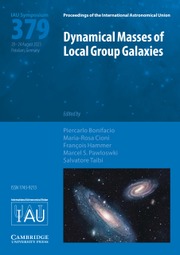No CrossRef data available.
Article contents
Exploring Planetary Nebulae in the dwarf galaxy VCC 1249 using MUSE data
Published online by Cambridge University Press: 06 October 2025
Abstract
This study focuses on investigating planetary nebulae (PNe) within the dwarf galaxy VCC 1249, located in the halo of the early-type galaxy (ETG) M49, by utilizing data obtained from the Multi-Unit Spectroscopic Explorer (MUSE). The integral-field spectroscopy capabilities of MUSE enable the identification of individual planetary nebulae. The interaction of VCC 1249 with the cluster-dominant galaxy M49 in the Virgo Subcluster B is driving this project, as it offers a unique opportunity to explore how high-density environments influence the properties and fate of low-mass galaxies. To identify potential PNe candidates within VCC 1249, the method proposed by Roth et al. (2021) is employed. Through this approach, ten candidates exhibiting features consistent with PNe properties have been identified.
Information
- Type
- Poster Paper
- Information
- Proceedings of the International Astronomical Union , Volume 19 , Symposium S384: Planetary Nebulae: A Universal Toolbox in the Era of Precision Astrophysics , December 2023 , pp. 391 - 393
- Copyright
- © The Author(s), 2025. Published by Cambridge University Press on behalf of International Astronomical Union


